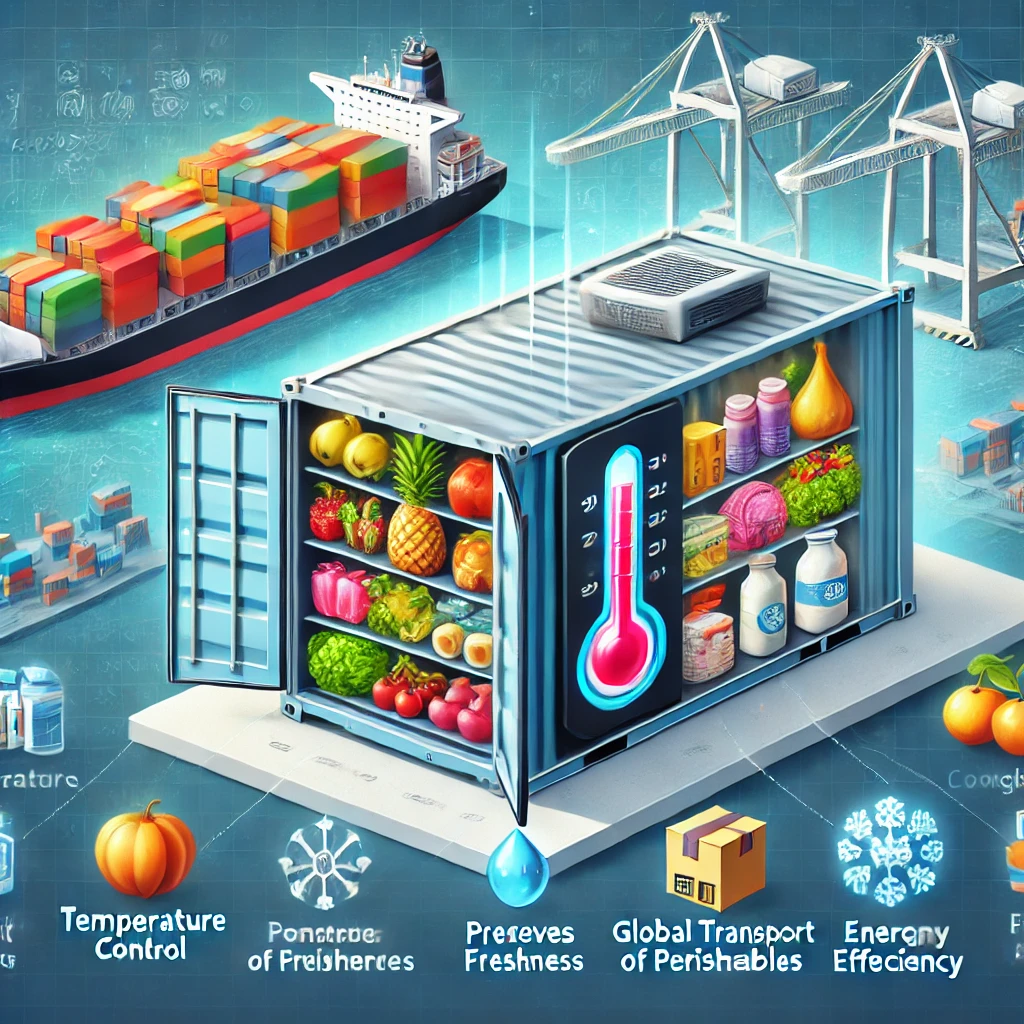How to Choose the Right Reefer Container: Key Factors to Consider
Reefer containers, or refrigerated containers, play a crucial role in transporting temperature-sensitive goods such as perishable food, pharmaceuticals, and certain chemicals. Choosing the right reefer container can make a significant difference in preserving the quality of your goods, ensuring they reach their destination in the best condition. However, not all reefer containers are created equal. There are several factors to take into account when selecting the right one for your business. In this guide, we’ll explore the key factors to consider when choosing a reefer container.
1. Type of Cargo
The type of goods you are transporting should be the first consideration when choosing a reefer container. Different types of cargo require different temperature settings and handling methods. For instance:
- Food Products: Fresh produce, dairy, seafood, and frozen meats require a constant and specific temperature to avoid spoilage. Some fruits and vegetables also need humidity control to maintain their freshness.
- Pharmaceuticals: Medicines and vaccines often require precise and narrow temperature ranges, sometimes as low as -20°C or colder.
- Chemicals: Certain chemicals may require refrigeration to prevent volatile reactions or degradation.
When selecting a reefer container, it’s essential to ensure the container can meet the exact temperature requirements of your cargo. Investing in a container with precise temperature controls will safeguard your products from spoilage or damage.
2. Temperature Range and Control
Not all reefer containers offer the same temperature range. Some are better suited for frozen products, while others maintain a chilled environment. Modern reefer containers can often be adjusted between -35°C and +30°C, providing flexibility for a wide range of cargo.
The temperature control system of the reefer container is also important. Containers with advanced systems can maintain a consistent temperature regardless of external conditions. Additionally, you may want to choose a reefer container with remote temperature monitoring capabilities, allowing you to track the internal environment in real-time throughout the shipping process. This can be especially valuable for high-stakes goods like pharmaceuticals, where even minor deviations can be costly.
3. Size and Capacity
Reefer containers come in various sizes, with the most common being 20-foot and 40-foot options. The right size for your business depends on:
- Volume of Goods: If you regularly transport large quantities of perishable goods, a larger 40-foot container may be ideal. For smaller shipments, a 20-foot reefer container can be more cost-effective.
- Port and Transport Restrictions: Consider the physical limitations at ports or storage facilities. Certain transport modes may have limitations on container size.
Additionally, choosing a container size too large can result in wasted space and higher costs, while choosing a container too small might compromise the quality of your goods by overpacking. Accurately estimating the volume of cargo you need to transport is essential to choosing the right reefer container size.
4. Energy Efficiency
Reefer containers require a constant power source to maintain the desired internal temperature. Since energy costs can add up over time, choosing an energy-efficient reefer container is a smart financial move. Many newer models come equipped with eco-friendly features that consume less energy, reducing overall costs while also minimizing the environmental impact of your operations.
Look for features such as:
- Energy-saving technologies like variable speed compressors, which adjust the power usage based on the cargo’s needs.
- Insulation efficiency to ensure that the reefer container retains temperature for longer periods, reducing the need for constant power.
5. Durability and Material
Reefer containers are subjected to rigorous conditions during transport, especially if they are being shipped over long distances. It’s essential to invest in a durable container that can withstand the wear and tear of frequent use. Look for reefer containers made from corrosion-resistant materials like stainless steel or aluminum to extend the lifespan of your investment.
Additionally, make sure the reefer container has a sturdy and reliable door lock system, as improper sealing can result in temperature fluctuations that compromise the quality of the goods inside.
6. Humidity and Ventilation Control
While temperature control is critical, some cargo also requires humidity and ventilation control. For example, fresh fruits and vegetables often need a higher level of humidity to prevent them from drying out. On the other hand, other products, such as grains, need ventilation to avoid condensation and spoilage.
Modern reefer containers often come equipped with systems that can regulate both humidity and airflow. If your cargo requires these features, make sure the container you choose has the right capabilities.
7. Compliance and Certification
Different regions may have varying requirements and regulations when it comes to shipping temperature-sensitive goods. For instance, some countries or industries have strict guidelines for the transportation of pharmaceuticals or food products. Ensuring that your reefer container complies with international shipping regulations and industry-specific certifications is crucial to avoid delays or fines. Look for certifications such as ISO 1496/2 (for refrigerated containers) and HACCP compliance for food safety.
Conclusion
Choosing the right reefer container is a critical decision for businesses that rely on the transport of temperature-sensitive goods. By considering factors such as cargo type, temperature control, size, energy efficiency, durability, and compliance, you can ensure that your goods arrive in the best condition possible while optimizing your logistics operations. Investing time in selecting the right container can pay off by preserving product quality, reducing waste, and ensuring customer satisfaction.
 عربي
عربي عربي
عربي